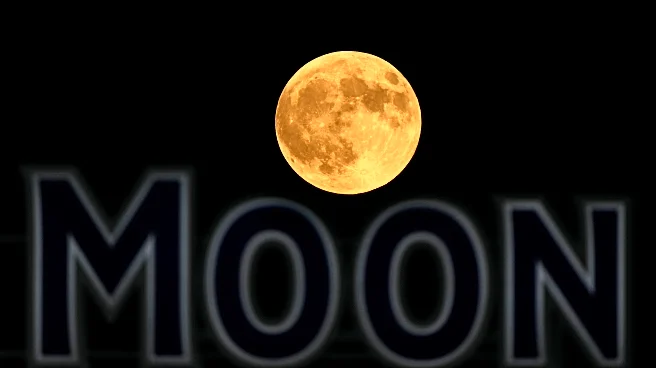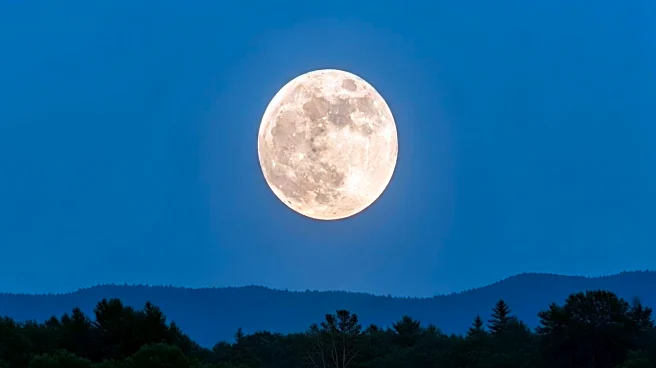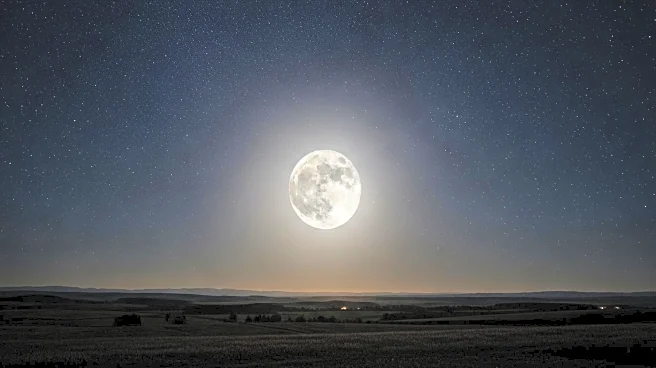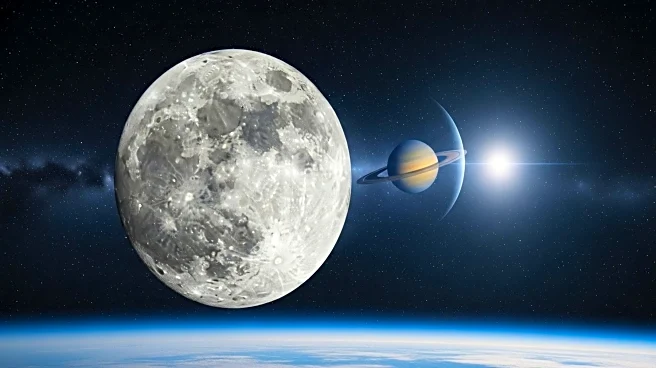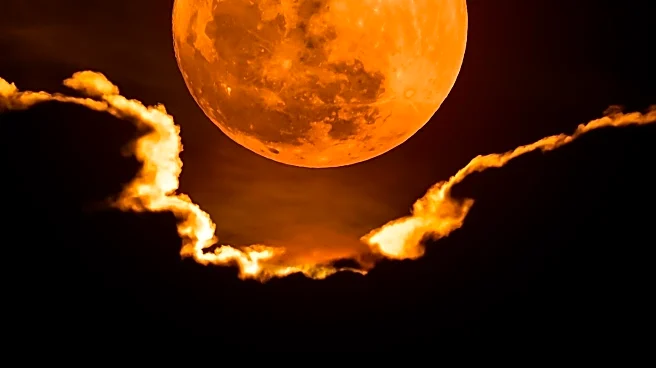What's Happening?
A supermoon is set to appear on Monday night, marking the first of three such events this year. This astronomical phenomenon occurs when a full moon is at its closest point to Earth in its orbit, making it appear up to 14% larger and 30% brighter than the faintest moon of the year. The moon will pass within approximately 224,600 miles of Earth. According to NASA, while the difference in size and brightness is subtle, it can be observed without special equipment if the skies are clear. Derrick Pitts, chief astronomer at the Franklin Institute in Philadelphia, notes that the supermoon is not an unusual event, though it can coincide with other astronomical occurrences like lunar eclipses. The closest supermoon of the year is expected in November, followed by another in December.
Why It's Important?
The supermoon offers a unique opportunity for both amateur and professional astronomers to observe the moon in greater detail. For the general public, it provides a chance to engage with astronomy and appreciate the natural beauty of celestial events. Such occurrences can spark interest in space science and encourage educational activities related to astronomy. Additionally, the supermoon can have cultural significance, often inspiring art and literature. The event also serves as a reminder of the intricate dynamics of our solar system and the ongoing exploration of space.
What's Next?
Following the supermoon in October, the closest supermoon of the year is anticipated in November, with another in December. Looking ahead to 2026, two lunar eclipses are expected: a total eclipse visible across much of North America, Asia, and Australia in March, and a partial eclipse across the Americas, Africa, and Europe in August. These events will continue to provide opportunities for observation and study, potentially leading to new insights in lunar science and astronomy.

